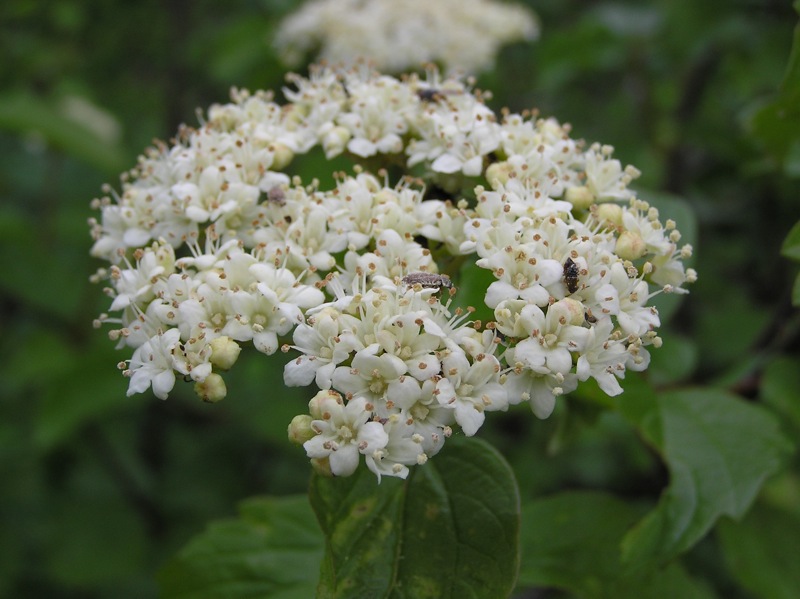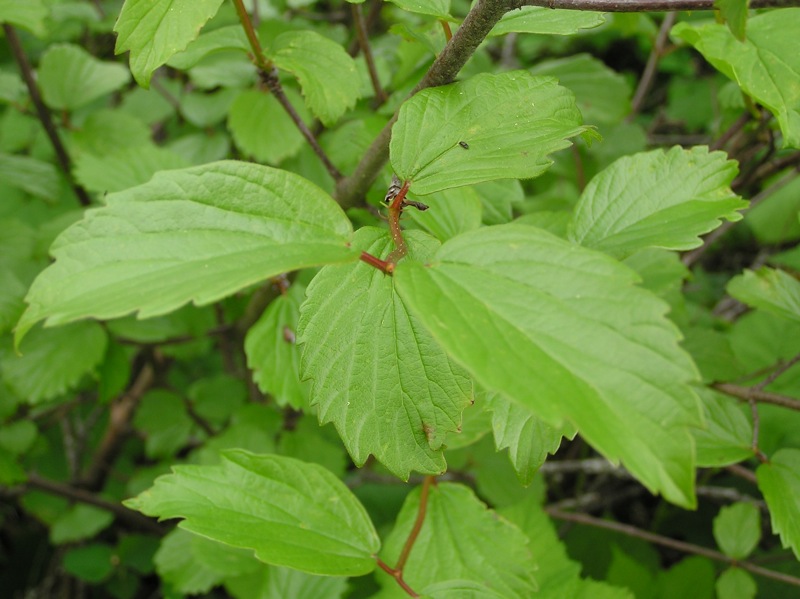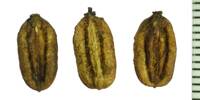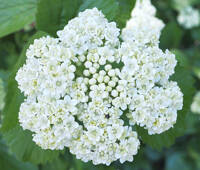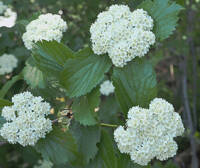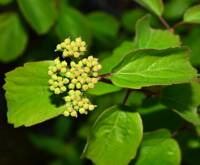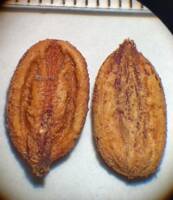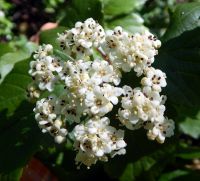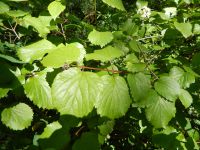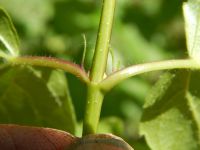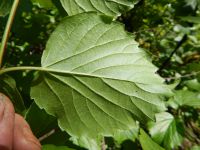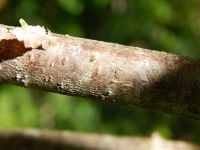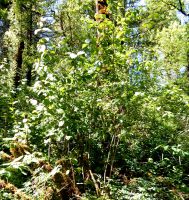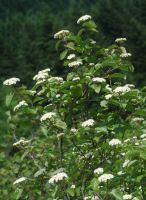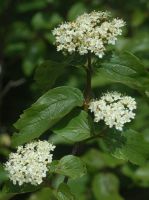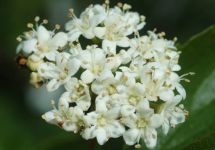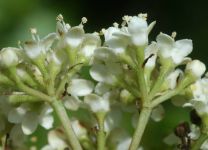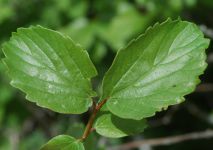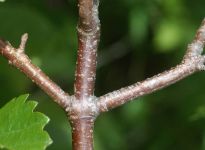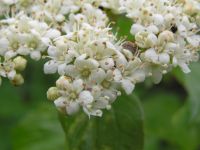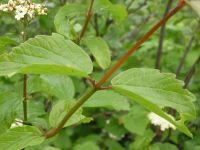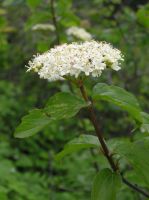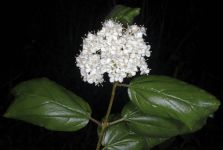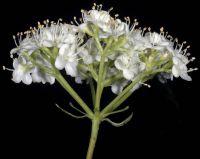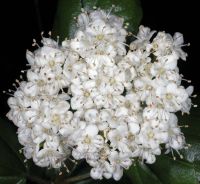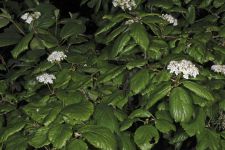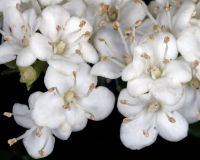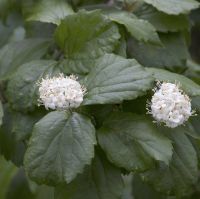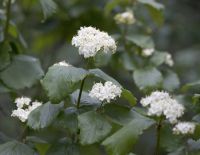Distribution: Occurring west of the Cascades crest chiefly along the southern border in Washington; southern Washington to northern California.
Habitat: Thickets, bottom lands, and open woods at low to middle elevations.
Flowers: May-June
Origin: Native
Growth Duration: Perennial
Conservation Status: Not of concern
Pollination: Flies, moths, beetles
Deciduous, erect shrubs 1-3 m. tall; stipules at the base of the petioles narrowly linear, 3-10 mm. long, long-hairy, sometimes wanting.
Leaves opposite, petiolate, the blades with short-stiff hairs beneath and 3 or 5 main veins from the base, broadly elliptic to sub-rotund, 3-8 cm. long, coarsely and bluntly toothed.
Inflorescence a compound umbel, terminal on the ends of leafy branches, many-flowered, 2.5-5 cm. wide; flowers all alike, the whitish corollas 5-9 mm. wide, the 5 lobes rounded; stamens 5, exerted, the filaments 3-5 mm. long; ovary inferior, 3-celled, but only 1 cell fertile.
Fruit a 1-seeded drupe, ellipsoid, 1-1.6 cm. long, red.
Publication: Flora Boreali-Americana 1: 280. 1833.
PNW Herbaria: Specimen records of Viburnum ellipticum in the Consortium of Pacific Northwest Herbaria database
WA Flora Checklist: Viburnum ellipticum checklist entry
OregonFlora: Viburnum ellipticum information
E-Flora BC: Viburnum ellipticum atlas page
CalPhotos: Viburnum ellipticum photos

